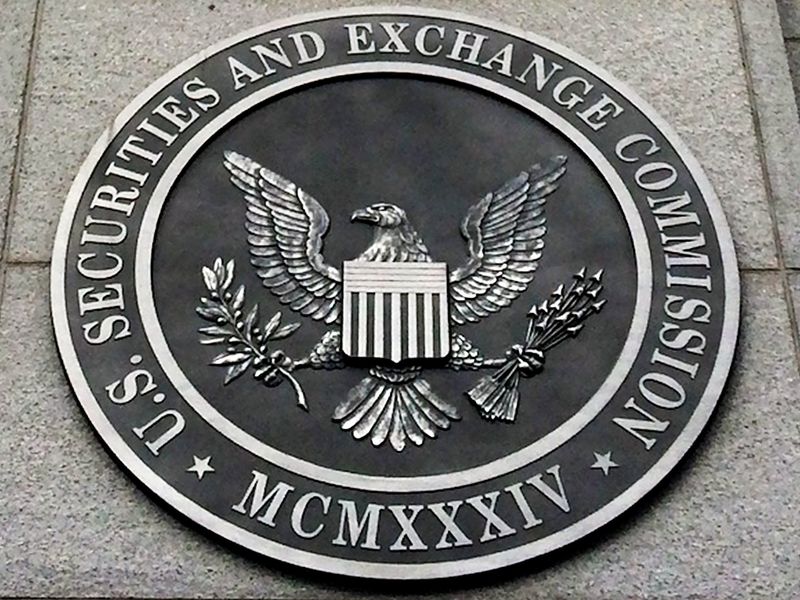Money Reimagined: Musk Masters the Attention Economy
Bitcoin’s recent surge shows the power of celebrity and how, like it or not, influencers create value in the modern economy.

Money Reimagined: Musk Masters the Attention Economy
Welcome to Money Reimagined.
Well, this past week felt historic. As bitcoin surged to all-time highs and found its way into TV studios and onto newspaper front pages, it felt like we’d crossed the chasm and gone mainstream. This happened in predictably weird and wild ways, with memes and attention-grabbing stunts – as discussed in the column below. Regardless, it seemed like no one could stop talking about bitcoin.
Ethereum had a big week, too. The Chicago Mercantile Exchange launched ether futures, which helped the token hit all-time highs as well. And the buzz around decentralized finance (DeFi) and nonfungible tokens (NFTs) just got louder.
All of that activity is putting ever more stress on the Ethereum network, where transaction costs – in the form of “gas fees” – are surging (see below). There’s an urgent need, in other words, for the scalability promised by Ethereum’s long-awaited 2.0 upgrade.
That’s what Sheila Warren and I discussed in this week’s episode of our “Money Reimagined” podcast. We asked Danny Ryan, a key Ethereum core researcher and communicator, to give us the lowdown on what’s happening with the massive upgrade, and more.
Have a listen. After reading the newsletter below.
Elon’s masterful meme rally
Are we not entertained?
When news broke Monday that Elon Musk’s Tesla had invested $1.5 billion in bitcoin, it capped off weeks of cryptic crypto tweets from the colorful CEO and it conveniently distracted people from some not-so-positive news about his company. As he set off a massive bitcoin price surge, he proved that for all his talents as an entrepreneur, Musk’s greatest skill lies in mastering the “attention economy.”
In the attention economy, everybody – literally, all of us in the user-generated world of social media – are competing for the one scarce commodity that digital technology cannot replicate into abundance: our time. The attention we give to entertainment and information is in scarce supply; command of it dictates how money and power is distributed across the internet.
Musk and others of his ilk – think Dave Portnoy, Kim Kardashian or Donald J. Trump [no social link available anymore] – are the ones winning this competition. They’ve developed giant audiences and have figured out how to deploy shareable memes, sexy images or shock commentary to trigger dopamine releases among their followers, whether it’s from amusement, anger, arousal or some other emotion.
Along the way, their hyper-engaged communities share their leader’s work, creating viral effects and, ultimately, inspiring people to buy things: stocks, country club memberships, celebrity-branded perfume or crypto tokens. This is how the game is played, how the dominance of messages and their social distribution is converted into money and power.
Now, more and more of these attention masters are turning their virality machines to crypto. The celebrity impact of Mark Cuban, Gene Simmons, Snoop Dogg and Lindsay Lohan each separately had a noticeable impact on certain crypto assets this past week. The winning meme in all that surely went to rapper Snoop Dogg, with a paean to dogecoin that included a shout-out to Musk:
Scarce attention meets digital scarcity
As Felix Salmon noted in his newsletter for Axios this week, crypto is made for this because it allows attention masters to essentially convert clicks, likes and shares into tangible rewards. The activity and enthusiasm they draw to a project creates buzz and steers buyers to tokens. In essence, they drive scarce-supply human attention into scarce-supply digital assets, a marriage that results in price gains.
This kind of behavior goes far beyond crypto. Attention economics has been a thing for some time, well before “meme investing” moves by Reddit group WallStreetBets’ two weeks ago fostered a powerful movement to drive up GameStop’s stock. (“The Attention Economy,” a book by Thomas Davenport and John Beck, appeared in 2001.) The use of viral, social network-driven communication is really the foundation of the information economy.
And it’s not necessarily a positive development. This business model creates massive social distortions and shifts incentives both for those who command power within the system and those who don’t.
Beyoncé can make $1 million from a single, short Instagram post and image. That’s a far more efficient way to generate money than the intense work that goes into a music album. How does that affect her priorities? (Note: the trade-off is quite different for the vast majority of musicians, who have nowhere near Queen Bey’s 165 million followers.)
Think also of Donald Trump and what he represents. I would argue his presidency wasn’t about political power in the traditional sense; it was a mechanism for amplifying his attention engagement power. His tweets seemed deliberately designed to manufacture outrage and division among both his millions of loyal supporters and his vehement opponents. The relentless, irresolvable arguments he fomented generated traffic and engagement, all of which he monetized in various ways.
Community = value
That crypto is fueled and buffeted by all this noise raises many issues. It’s not necessarily bad, but for those who believe in the technology’s potential, it does put into sharp relief some core questions about who gets to influence its development. Crypto prides itself on meritocracy: The best developers, the best ideas are supposed to win. It’s not about reputation, seniority and definitely not celebrity. How do we square that ethos with all this unseemingly self-promotion?
On the negative side, a Musk-led rally looks and feels to some like an empty “pump and dump” moment, one that the Tesla impresario or anyone in his circle could exploit, leaving meme-following investors holding the bag. It’s not a good look for crypto generally.
But if you buy into the idea that bitcoin will one day be a reserve asset for companies and people, regardless of how it gets there, then Tesla’s purchase can be seen more positively. Musk is motivating masses of ordinary Joes in a process of democratization. Mass, social participation in these price rallies is a decentralizing force, simply because it diminishes the dominance of latecomer institutions.
What makes these arguments tricky is a circularity problem around where value comes from in crypto projects. Unlike a stock such as GameStop, where value will ultimately be dictated by expectations on whether the company can earn profits in the future, value in a cryptocurrency like bitcoin is intrinsically linked with the expansion of its user network. The wider the adoption, the bigger the network, the more is at stake, the more secure it is and the more it is accepted as a store-of-value and, perhaps eventually, as a medium of exchange.
Building a community is the single most important factor dictating value for a cryptocurrency. So, in theory, an episode of meme-driven mass social vitality that stirs widespread engagement, as silly as it all might seem, can be a route to success.
At the end of the day, though, value can’t be separated from values, from the underlying narrative of why a crypto asset is worth owning. If a crypto community expands on the basis of a viral sales pitch alone, that diminishes and overshadows the core technical features of the project – say, Bitcoin’s censorship resistance or its principles of self-custody and peer-to-peer exchange.
Do meme rallies make regulators more or less likely to intervene in a crypto token’s growth? And what does that mean for the long-term goals many of us want to see occur, such as financial inclusion? Or is expansion and adoption, regardless of how it grows, the only thing that matters at this point?
What we can say is the technology itself doesn’t care what we do with it. It’s up to us to decide whether to ride with Elon “to the moon” or take a more prosaic path to mainstream acceptance.
A flippening 7,000 years in the making
As I’ve written before, it’s unfair to judge bitcoin’s aspirations to become a “digital gold” store-of-value by its current, volatile price performance. It will take time for bitcoin to become accepted widely enough as a universal reserve asset, much as it surely took gold a long time to become a widely accepted currency thousands of years ago. Bitcoin is not yet digital gold. It is becoming digital gold.
The writer Grant Bartel has come up with a simple way of tracking that becoming: a proxy called “Flip Progress” that measures bitcoin’s value versus gold based on market capitalization. This is from his bitcoinflips.gold website.

What’s striking, of course, is the acceleration. At 7%, the flip progress ratio still has a long way to go. But when compared to the 1% ratio it held a year ago, it suggests a real shift in narrative could be occurring.
The Conversation: ETH gas fees

While bitcoiners, dogecoiners and NFTers were obsessing with Elon Musk, Snoop Dogg and Gene Simmons this week, the “Degens” driving the DeFi craze on Ethereum were consumed with another topic: gas fees. Surging activity means that the already overburdened Ethereum blockchain is becoming even more congested. And when that happens, the miners who run the computational network start to rake in higher fees as users jack up rates to complete transactions.
DeFi enthusiast @JeanneDeBit put the math problem of high gas fees in stark terms:
And then she offered a rationalization, which, although in jest, was quite spot on. Fees are indeed a form of natural, on-chain regulation. They add friction to the system to keep activity within the bounds of capacity.
Meanwhile, Messari CEO Ryan Selkis, offered a different take: that, if you’re smart, you can join the “yield farmers” who play the DeFi market to profit on interest rate arbitrage opportunities while the bigger issue of Ethereum fees works itself out.
But, ultimately, said Ryan Sean Adams, there’s not much you can do in a booming market.
Relevant reads: The blue-chips diving in
The story flow during this crypto-mainstreaming week was full of blue-chip companies.
Mastercard said it would enable crypto payments for merchants on its network…










